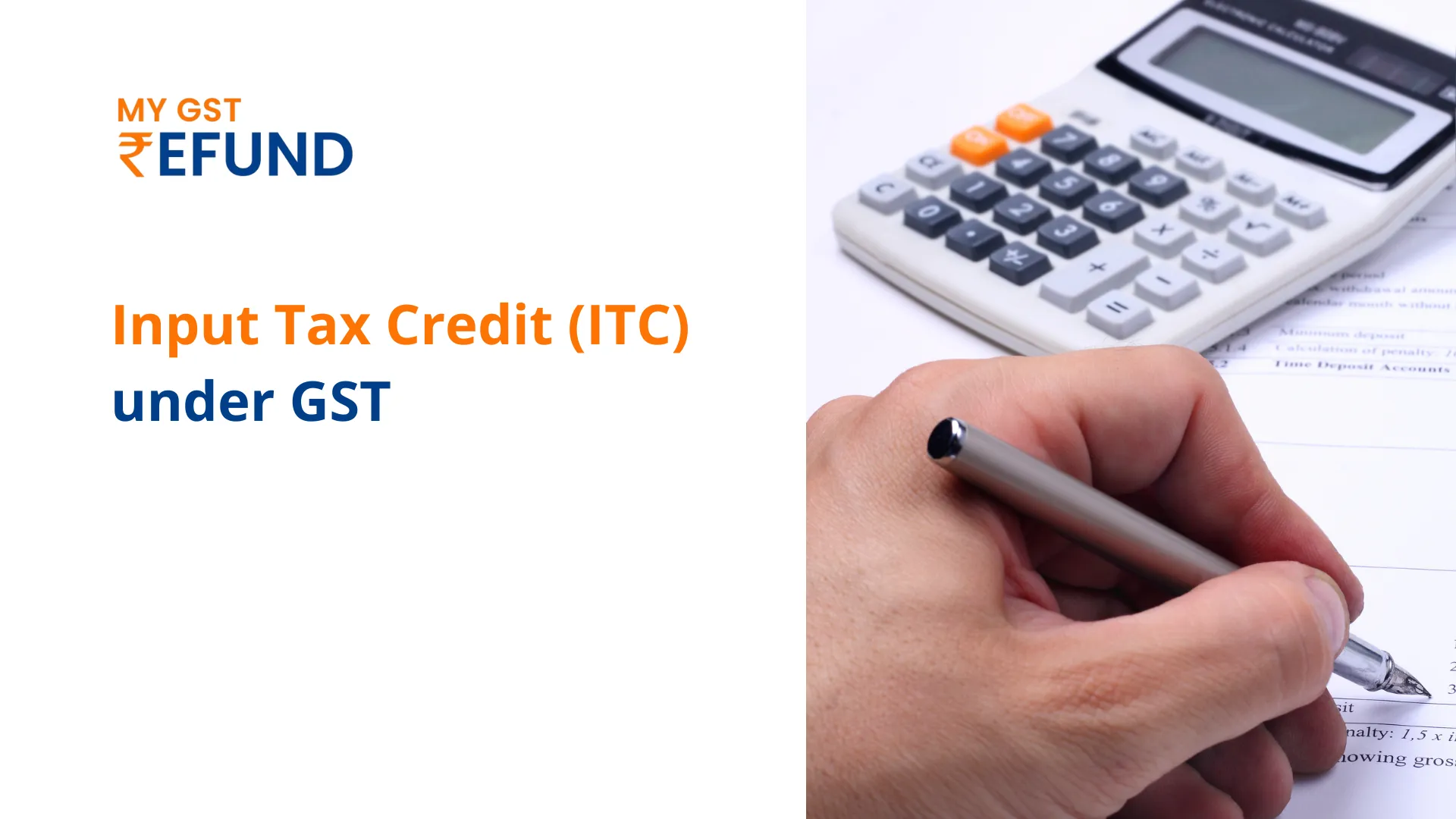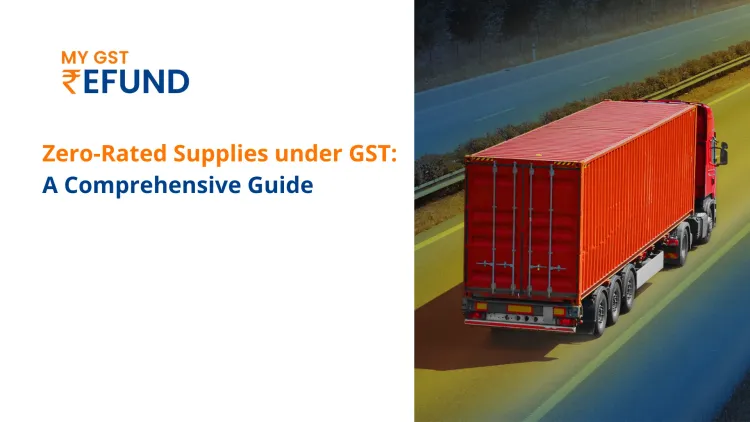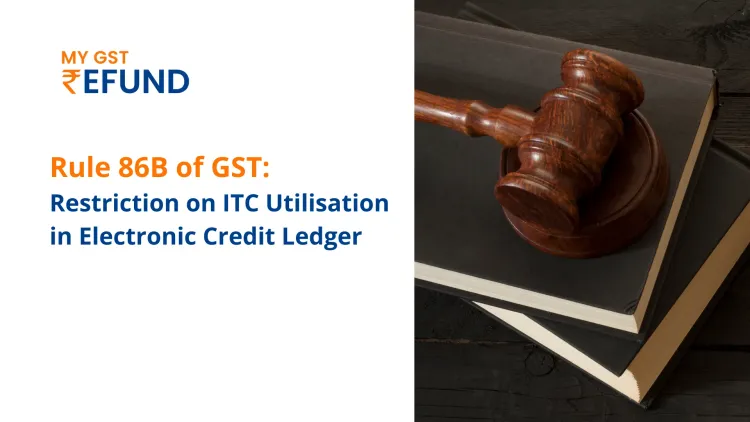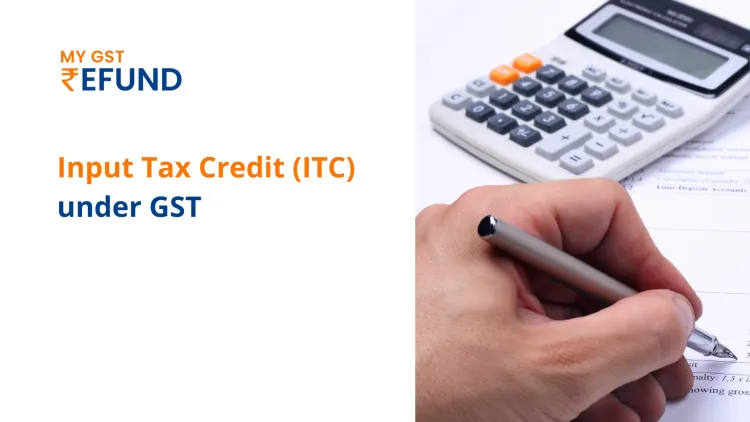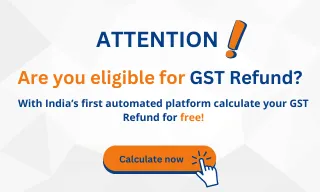Complete Guide to Input Tax Credit (ITC) under GST
In the GST tax regime of India, one of the most prominent features is the input tax credit (ITC). A business can lower its tax payments by claiming a credit for taxes paid on items and services that it uses. This system is made to stop the cascading effect of taxes during the previous periods, whereby enterprises also paid duties on duties. Thus, this general guide will consider all these elements, such as ITC concepts, benefits, eligibility, the claim process and other recent integration. When these concepts are well understood and ITC applied appropriately, there can be optimization of proper financial planning through cost reduction and continual improvement in cash flow.
What is Input Tax Credit (ITC)?
Input Tax Credit (ITC) is a credit that businesses can claim for the GST they have paid on goods or services bought for their business purposes. This credit may be used to lower the GST output liability on sales of goods or services. In simple terms, ITC ensures that businesses are only taxed on the value added by them rather than the total amount of their goods or services.
For instance, a business buys raw materials costing ₹1,00,000 and pays ₹18,000 as GST, calculating 18%. It can claim this ₹18,000 as ITC. Then, if it sells its final product for ₹2,00,000 and charges ₹36,000 as GST, it can reduce its tax liability by the amount of ITC of ₹18,000 already claimed. This means that the business will only need to pay ₹18,000 as net GST liability (₹36,000 – ₹18,000).
Benefits of ITC
ITC offers several significant benefits for businesses under GST, making it a powerful tool for improving profitability and cash flow.
1. Reducing Tax Liability
One of the key advantages of ITC is that it lowers the overall tax liability of companies. By permitting businesses to submit a request for the tax incurred on inputs, government taxes just the value added by businesses. It curbs the cascading effect, which was prevalent in an earlier indirect taxation system where taxes were levied on taxes.
Let's take an example where a manufacturing industry has paid GST of ₹50,000 on raw materials purchased. However, after the manufacturing process, this company sells its finished goods at Rs. 10,00,000 and charges Gst on it @18%. Thus, just for paying the GST of Rs.1,30,000 after adjusting the input tax credit (ITC), of Rs.50,000.
2. Improving Cash Flow
Utilisation of ITC in an effective manner has the potential to generate a considerable rise in a firm’s cash flow. Rather than remitting the entire sum of GST on every sale, enterprises may apply ITC towards their tax liabilities, enabling them to retain more funds for day-to-day trade and investments.
For instance, a trader buys products costing him ₹5,00,000 and pays GST of ₹90,000. After selling these items for ₹8,00,000 with an addition GST charge of ₹1,44,000, he uses ITC such that only ₹54,000 (i.e., ₹1,44,000 - ₹90,000) is paid. This decrease in payable taxes consequently assists him in cash flow management.
3. Enhancing Profitability
By helping to lower the effective tax burden, ITC can improve profitability. The saved money can be directed toward business growth, expansion or improving operational efficiency. Lower taxes enable higher retained earnings that can be reinvested in the business.
Eligibility Criteria for ITC
To claim ITC, businesses must meet specific eligibility criteria under GST. Not all businesses or purchases are eligible for ITC, and understanding these criteria is crucial for compliance.
Who Can Claim ITC?
- Registered Taxpayers: Only registered taxpayers with a GST number are eligible for the Input Tax Credit (ITC). This means that ITC is not available for those who are unregistered businesses.
- Tax Invoice: To claim ITC, a proper tax invoice or debit note must be available. The invoice should have all the required information, like GSTIN, HSN code and tax amount.
- Business Use: The goods or services on which ITC is being claimed must only be used for business purposes. No ITC can be claimed for personal and other non-business expenses.
- No Composition Scheme: Under GST, businesses that have opted for the composition scheme are not entitled to claim ITC. The scheme is meant for small taxpayers paying tax at a flat rate but not availing of input tax credits.
How to Claim ITC
Claiming ITC under GST involves a step-by-step process that requires careful attention to detail and compliance with the rules. Here’s how businesses can claim ITC:
Step-by-Step Process:
1. Supplier’s Compliance: Ensure that the supplier has filed their GSTR-1 tax return since the invoice details will automatically load in the receiver’s GSTR-2B. Otherwise, the receiver will not have a chance to reclaim ITC.
2. Invoice Reconciliation: Any ITC claimed by the receiver must correspond to the invoices uploaded by suppliers in the GST portal. Any mismatch can cause dismissal of the claim.
3. Returns Filing: The recipient is supposed to file GSTR-3B and request an appropriate ITC amount. It is important to note that proper care should be taken in order to confirm auto-populated data relating to GSTR-2B.
4. Keeping Records: It is necessary for all businesses to keep relevant documents and evidence related to their ITC claim. Records should be maintained for a period of at least six years because tax officials might conduct an audit or assessment.
Common Mistakes to Avoid
- Inaccurate Bill Details: Make sure that your tax bill has all the required information, like the appropriate GSTIN, HSN code and tax figure. Any mistakes may make the ITC claim invalid.
- Claiming ITC on Non-Eligible Goods/Services: Companies should be cognizant of items and services that cannot qualify for ITC, such as those meant for personal use or items purchased for personal consumption only.
Recent Updates to ITC Rules
Since the introduction of GST in the year 2017, there have been numerous amendments in respect of ITC under GST. The objectives for such modifications include promoting conformity, minimizing tax evasion and making it possible for real businesses to enjoy ITC advantages. To ensure efficacious tax planning, it is very imperative that one keeps up with these changes.
Latest Changes in ITC Regulations:
- Provisional ITC Restrictions: Previously, it was possible for firms to obtain provisional ITC relying on invoices received even if their providers did not produce records. Nonetheless, currently the government has placed limitations that restrict provisional ITC to a specific percentage among eligible credits, making companies pay closer attention to compliance by supplier companies.
- Blocking of ITC: In some circumstances, authorities may block ITC due to irregularities detected during GST filing by suppliers. Instances like where a supplier fails to make payment for GST or files inaccurate returns could lead into this.
- Restrictions on ITC Availability: At present, businesses can only claim ITC after tax has been remitted to the government by the supplier and such has been reported within their returns. Thus, the supplier's GST compliance has gained extra significance.
Impact of Updates on Businesses:
Companies face additional hurdles in claiming ITC after these updates. Business entities must ensure their suppliers comply with GST since they will lose their rights to ITC if they don’t. Additionally, companies must be more careful when maintaining records and reconciling invoices, as discrepancies may arise, which could cause blockage or denial of ITC.
Conclusion
It should be noted however that in order to claim the ITC, several guidelines must be followed, such as ensuring that suppliers adhere to GST rules as well as keeping appropriate records. Recently introduced ITC regulations require organizations to remain alert if they want to continue benefiting from this essential tax-reducing mechanism.
By knowing who qualifies, how one claims it, and what is happening currently in terms of regulation, businesses can optimize their taxation methods, save money and achieve greater levels of financial wellbeing.
FAQ
Q.What is Input Tax Credit (ITC) under GST?
Input Tax Credit (ITC) under GST lets businesses claim back the GST they paid on their purchases. This can be used to reduce their tax on sales. It helps lower the tax burden for businesses.
Q.Who is eligible to claim ITC under GST?
To claim ITC, businesses must be registered under GST and have valid invoices. They must also use the goods or services for business. The rules for eligibility are detailed in GST regulations.
Q.How can businesses claim ITC under GST?
Claiming ITC involves filing GST returns on timely and checking invoices with suppliers. Businesses need to keep all the right documents. Following the right steps is key for a successful claim.
Q.What documents are required for ITC claims under GST?
For ITC claims, businesses need tax invoices, bills, and other credit taking documents. The exact documents needed depend on the type of transaction. These are detailed in GST rules.
Q.Are there any restrictions or limitations on ITC under GST?
Yes, ITC has limits under GST. Some purchases or suppliers may not qualify for ITC. Businesses must know these rules to avoid issues with their claims.
Q.What is the process of reversing ITC under GST?
Reversing ITC is needed in certain situations, like unpaid invoices or using goods for personal use. There are specific steps to follow for this process. It ensures businesses follow GST rules.
Q.How does ITC affect the compliance and audit requirements under GST?
Following ITC rules is vital under GST. Businesses must match their ITC claims with invoices and be ready for audits. Keeping accurate records is crucial for smooth claims and avoiding audit problems.
Q.What are the recent updates and amendments to the ITC rules under GST?
ITC rules under GST have changed over time. Updates include new eligibility, changed deadlines, and more anti-avoidance measures. Staying updated helps businesses make the most of their tax benefits.
Also Read :ICEGATE Tracking: How to Track Your Shipments Easily
Related Posts



